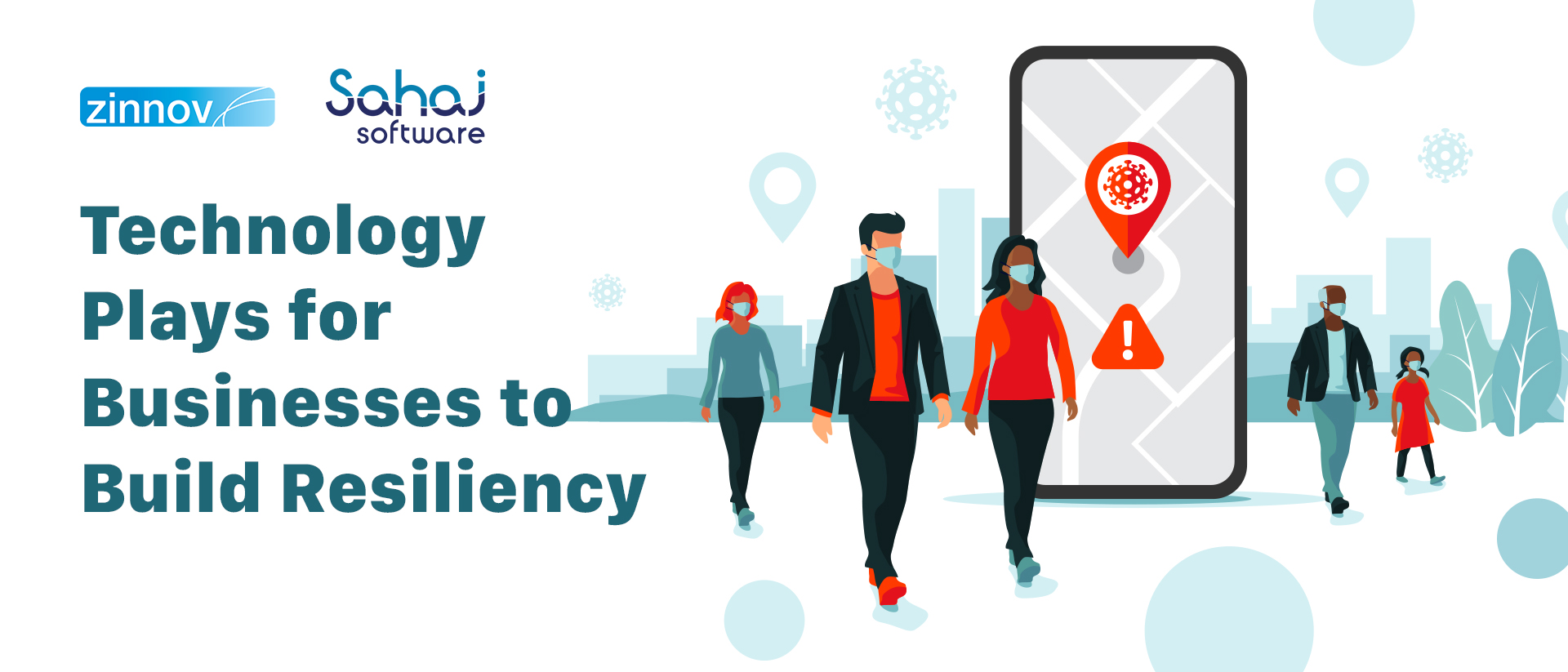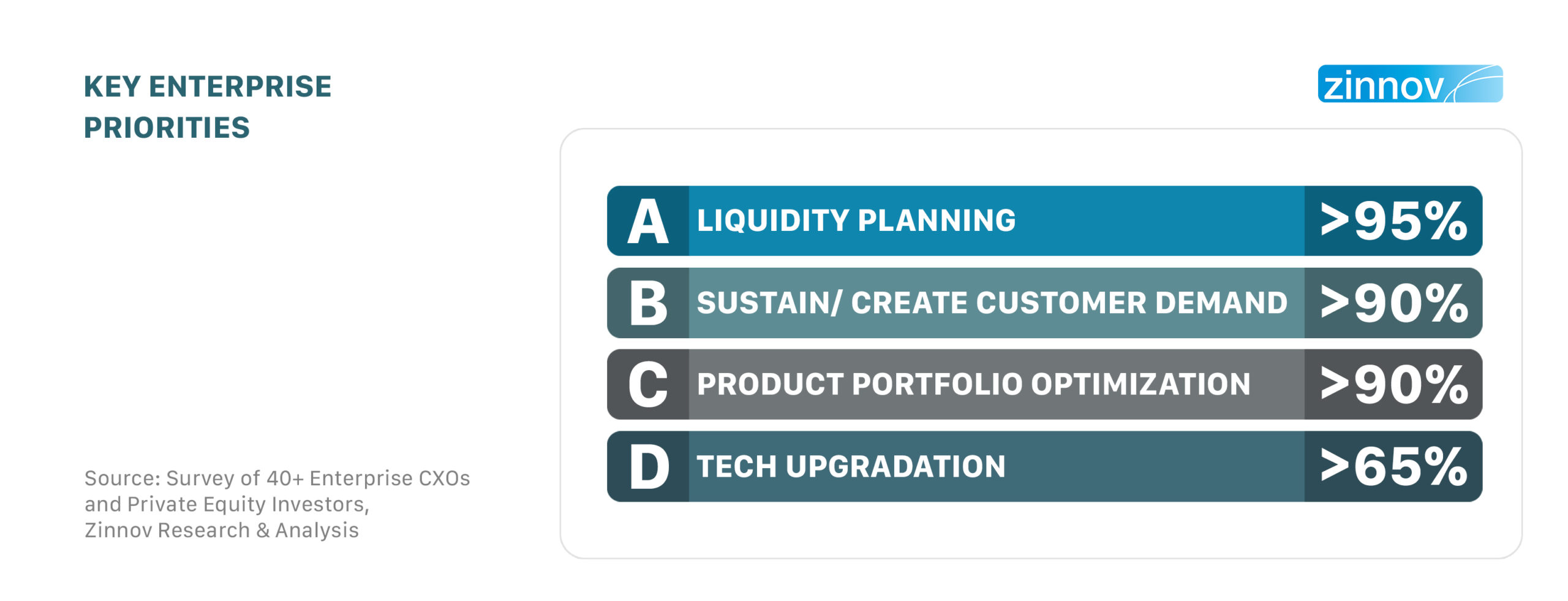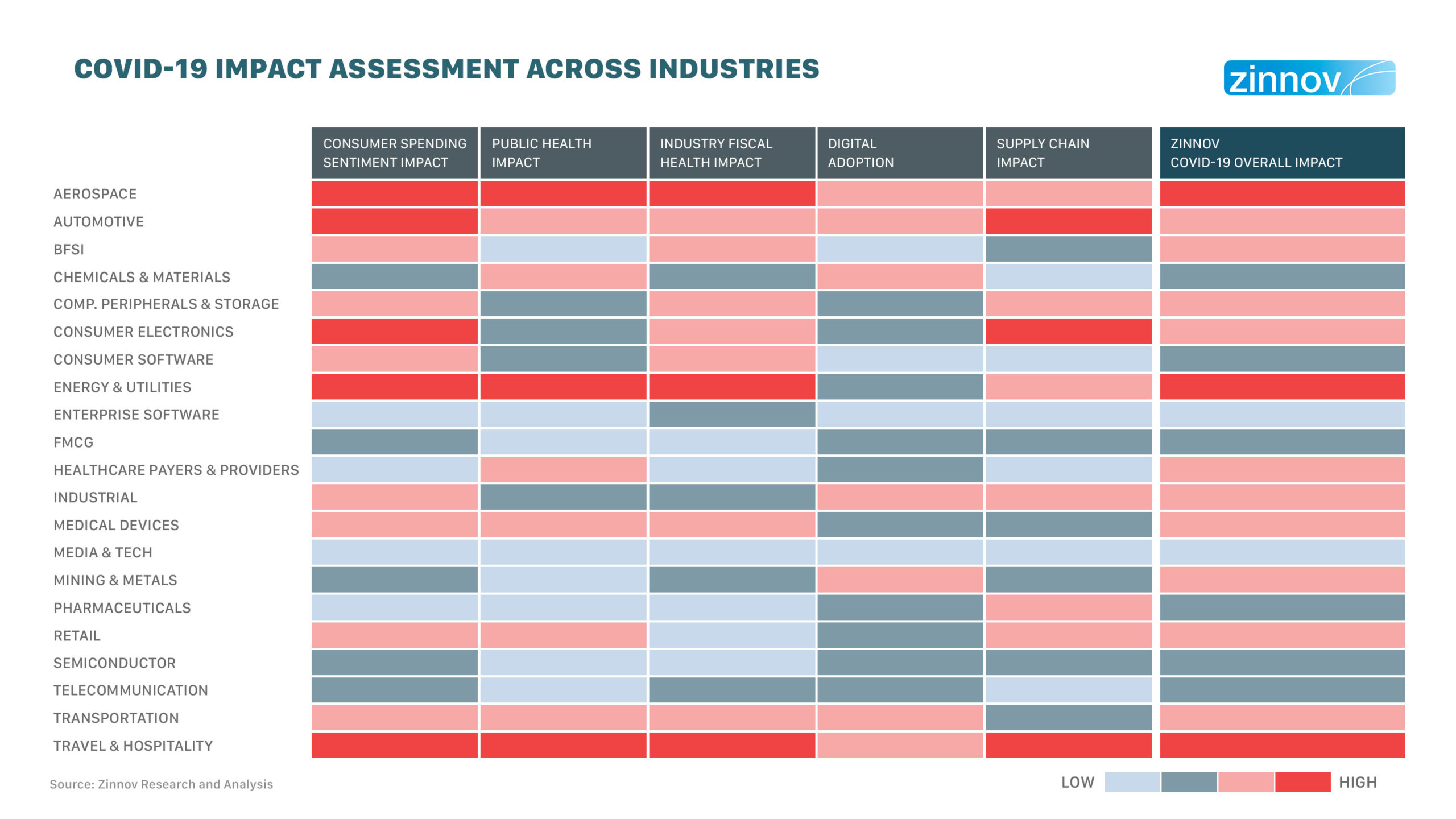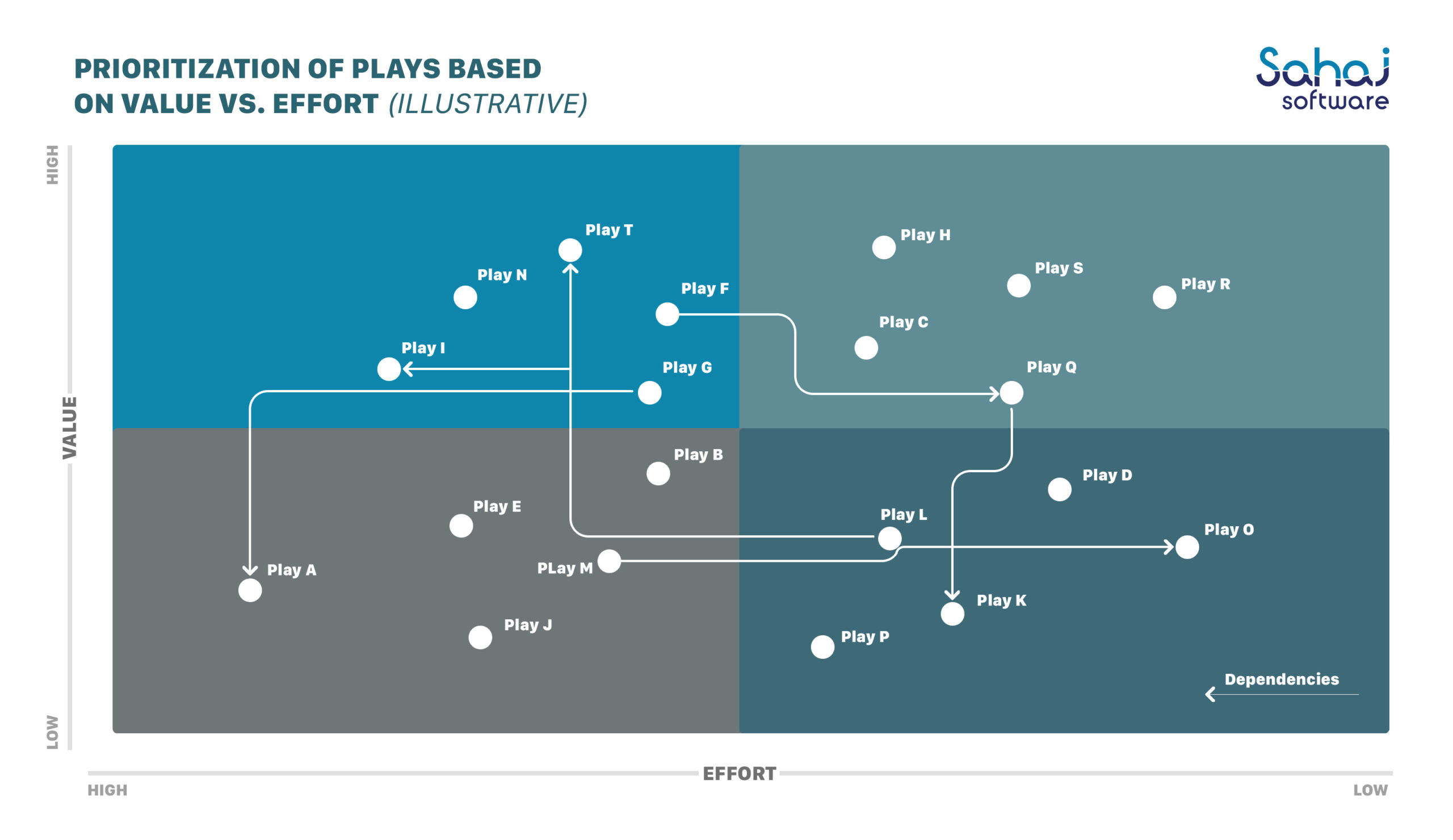|
|

Business priorities have changed drastically with the onset of COVID-19. A recent Zinnov survey of technology CEOs and business leaders about their changing priorities shows business (or product) portfolio optimization rising to the top, along with a comprehensive modernization of their technology capability. Planning for liquidity and reviving customer demand ranked next as priorities, according to the survey.

Business leaders are betting on technology-led strategies and core technology capability to navigate the uncertainties brought on by COVID-19, and as a pivotal aspect of their post-pandemic roadmap. The current situation has also highlighted the importance for technology capability to withstand and respond to unplanned and unforeseen business disruptions.
Case in point is a data-centric company in an industry that has been adversely impacted. It runs large data ingestion pipelines. The sheer amount of data analyzed makes its data platform expensive to sustain, especially with revenues in a steep decline and extreme uncertainty about the time and nature of a revival in the industry. Many businesses today, are in a similar situation. Fortunately, the company’s data platform was designed for high observability and dynamic infrastructure scalability. As a result, they could turn off workloads not relevant during present times and scale down infrastructure use. They could easily and quickly trade-off computation speed for costs, saving 75% of their ongoing infrastructure cost for the data platform.
Compare this with most other companies. Despite the promise of opex flexibility, cloud or infrastructure costs don’t easily or naturally scale down with reduced business operations. Poor or inflexible design is usually why. Unlike the case of the data-centric company where they didn’t just react quickly, but also had the inherent capability to respond to a new or unplanned situation. They accomplished what they did with toggles on a dashboard, without coding or engineering effort. This is an example of technology capability to withstand unforeseen disruptions or changes in business. In the post-pandemic scenario, such capability will provide the required flexibility and lead to business resilience, thus paving the way for a company to do things differently and pursue different recovery trajectories.
The adjustments that people are forced to make because of COVID-19 are driving irreversible shifts in consumer behavior and in the structure of future workplaces. Technology will shape the customer and employee experiences of the future, as well as drive entirely new business models across industries. Since various industries are impacted very differently, they have widely varying time frames for recovery, as well as the extent of transformation they will undergo.

Even within a specific industry, individual companies are impacted differently. While a few companies and industries are benefiting from tailwinds, most are facing moderate to heavy headwinds. The scale of disruption and dimensions of transformation will significantly alter a company’s strategy or recovery trajectory based on its current market competitiveness, core technology capability, and its ability to invest in technology to optimize, transform, and innovate at the same time.
The new realities such as remote work solutions, home-based education, and contactless payment and delivery, point to a broad-based shift towards digital-first/digital-only business models. In the past few weeks, we have witnessed companies and products move quickly to serve emerging needs in software segments such as Healthcare, Education, and Remote Collaboration, along with formulating new pricing models and forging of new channel partnerships. A noteworthy observation is that companies with the technology foundation built for flexibility and change are able to move faster than those that do not. For instance, technology capability built to measure outdoor media advertising reach and to design better campaigns could be repurposed to monitor the movement of populations. Similarly, the technology infrastructure built for standardized test preparation is being adapted by universities and schools for academic testing.
Emerging needs of customers and employees during COVID-19 have been a catalyst for companies to abandon traditional and often declining channels of engagement and business in favor of digital ones, much faster than the digital transformation phenomenon of the last decade. Similarly, making relevant data available to more business users will amplify a business’ ability to adapt to heightened operational uncertainty. This makes data platforms with cloud infrastructure essential, establishing these as the foundation for businesses to evolve. The focus of this transformation is anchored around data-driven experiments and new digital experiences.
The ongoing situation is an opportunity for companies to be more proactive about their core technology capability. This applies to companies with technology at the core of their business, as well as to companies and businesses enabled by their use of technology. Given the disruption already underway and the uncertainty about the changes ahead, technology leaders have a compelling case to –
Enabling these is the focus of the post-pandemic technology playbook that will help companies and technology leaders. The playbook is not meant to be prescriptive or as a set of one-size-fits-all recommendations, but as a navigational guide to select, prioritize, and sequence plays unique to each product or business. The playbook is an exhaustive list of technology plays for a company to respond to unplanned disruptions and to strengthen its inherent technology capability to build resiliency.
With that objective, we have compiled an exhaustive list of plays to strengthen a company’s technology capability and its ability to respond to change – in its products, strategies, and operations. High observability or dynamic infrastructure scalability are just two of the many plays in that playbook that includes plays related to architecture, security, experimentation, infrastructure efficiency, team collaboration, product evolution, and more. It is no surprise that some, if not many, of the plays are about good design as well as organization practices to build a more robust technology capability. Factoring the long-term costs of quick-fix solutions or technology band-aids, both as direct and indirect costs, is one of the most important advantages of the playbook-driven approach. This approach focuses on an enterprise’s ability to prioritize scarce resources including technology spending, without disadvantaging a company and its technology capability in the long term.
Like in a sport, executing organization-level plays involves some skill with a lot of method and practice. But the key to success is the ability to select the plays based on the situation and context. On similar lines, executing a post-pandemic playbook is also about the context for a company which will clarify the trajectories that the company will have to take on its road to recovery. We see five broad trajectories for companies, each of which comes with a different selection and sequence of technology plays.
The purpose and value of specific plays vary significantly across different organizations. Following the playbook is also a way to avoid irrelevant plays, and thus prioritizing the right ones of relevance and value.
Every play in the playbook, while unique in its objective and execution, is not independent. Some are most meaningful when combined with the context and strategy of a company. The value from each play or a combination of them will be realized in different ways –
Executing a post-pandemic technology playbook starts with prioritization. A simple approach is to plot every play on the dimensions of value and effort (or cost). The plays with a high value yield for a low effort will emerge.

It is important to then account for dependencies and the value of clustering. For example, some high-value, low-effort plays may require high-effort or a low-value play as a prerequisite. Some plays also create the most value when combined together. Another factor that strongly influences prioritization is relative urgency. However, the sense of urgency can be very company-specific and based on the state of their business or technology capability, prior to the onset of the pandemic and the disruption it has caused.
The selection of plays followed by their value-based prioritization creates a long-term roadmap. The plays lend themselves to be executed in an agile, iterative, and phased approach. The playbook enables the execution planning related to organizational capacity and capability (skills, readiness, and bandwidth), schedules, and the ability to run plays in parallel. An important aspect of this is a continuous balancing of objectives to build a strong and robust long-term technology capability on one side, while supporting all immediate triggers and business needs on the other, as the enterprise navigates itself out of the impact of the pandemic.
What is undeniable is the positive long-term outlook for technology and its role in business and society at large. Yet, the journey to fully embrace technology and all its potential is filled with near-term uncertainties and difficult choices. Past assumptions or commitments to projects or spending are no longer sacrosanct with the context having fundamentally changed, often irreversibly so, because of COVID-19.
Therefore, this post-pandemic technology playbook is a guide for every technology leader and practitioner to leverage the current disruption and consequent changes as a catalyst to transform their company’s inherent technology capability.